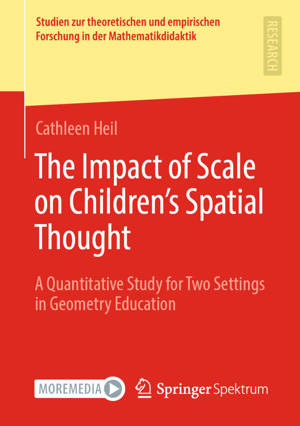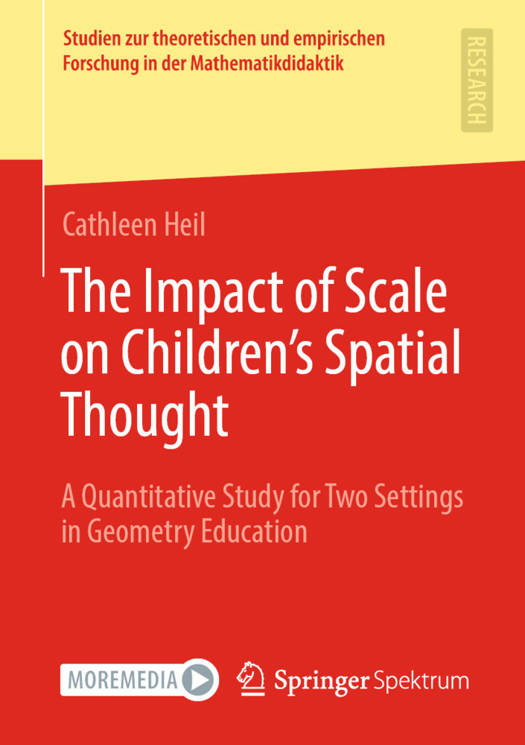
- Afhalen na 1 uur in een winkel met voorraad
- Gratis thuislevering in België vanaf € 30
- Ruim aanbod met 7 miljoen producten
- Afhalen na 1 uur in een winkel met voorraad
- Gratis thuislevering in België vanaf € 30
- Ruim aanbod met 7 miljoen producten
Zoeken
The Impact of Scale on Children's Spatial Thought
A Quantitative Study for Two Settings in Geometry Education
Cathleen Heil
€ 52,95
+ 105 punten
Omschrijving
In this book, Cathleen Heil addresses the question of how to conceptually understand children's spatial thought in the context of geometry education. She proposes that in order to help children develop their abilities to successfully grasp and manipulate the spatial relations they experience in their everyday lives, spatial thought should not only be addressed in written or tabletop settings at school. Instead, geometry education should also focus on settings involving real space, such as during reasoning with maps.
In a first part of this book, she theoretically addresses the construct of spatial thought at different scales of space from a cognitive psychological point of view and shows that maps can be rich sources for spatial thinking. In a second part, she proposes how to measure children's spatial thought in a paper-and-pencil setting and map-based setting in real space. In a third, empirical part, she examines the relations between children's spatialthought in those two settings both at a manifest and latent level.
In a first part of this book, she theoretically addresses the construct of spatial thought at different scales of space from a cognitive psychological point of view and shows that maps can be rich sources for spatial thinking. In a second part, she proposes how to measure children's spatial thought in a paper-and-pencil setting and map-based setting in real space. In a third, empirical part, she examines the relations between children's spatialthought in those two settings both at a manifest and latent level.
Specificaties
Betrokkenen
- Auteur(s):
- Uitgeverij:
Inhoud
- Aantal bladzijden:
- 464
- Taal:
- Engels
- Reeks:
Eigenschappen
- Productcode (EAN):
- 9783658326470
- Verschijningsdatum:
- 23/02/2021
- Uitvoering:
- Paperback
- Formaat:
- Trade paperback (VS)
- Afmetingen:
- 148 mm x 210 mm
- Gewicht:
- 585 g

Alleen bij Standaard Boekhandel
+ 105 punten op je klantenkaart van Standaard Boekhandel
Beoordelingen
We publiceren alleen reviews die voldoen aan de voorwaarden voor reviews. Bekijk onze voorwaarden voor reviews.











